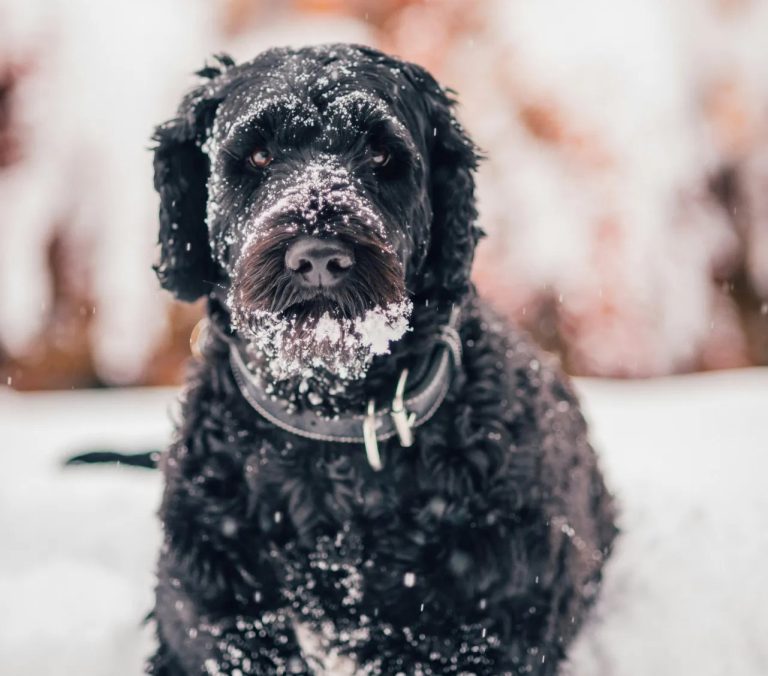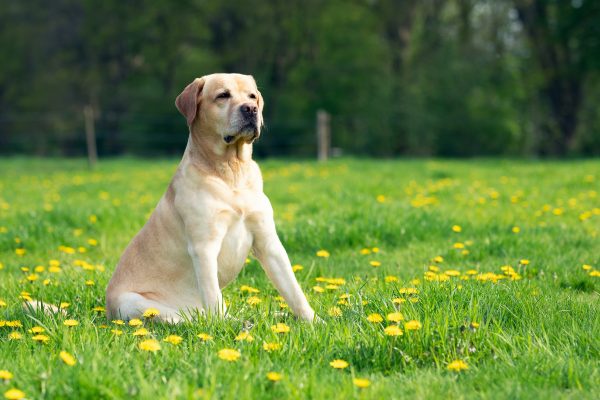Labrador Retrievers and Portuguese Water Dogs are both popular family pets. Each breed has unique traits and characteristics. Let’s explore their origins and key facts about both breeds. And, if you’re still on the market to buy a Rottweiler, PuppySpot currently offers a $300 discount using the code PUPPY300, just click the banner below!
Labrador Retriever Basics
Labrador Retrievers are medium to large dogs. Males stand 22.5-24.5 inches tall and weigh 65-80 pounds. Females are 21.5-23.5 inches tall and weigh 55-70 pounds. Labs are known for their friendly, outgoing personalities. They’re great with kids and other pets. These dogs need lots of exercise and enjoy swimming.
Labs excel in various roles:
- Family companions
- Guide dogs
- Search and rescue
- Therapy dogs
Their coat is easy to maintain with weekly brushing.
Portuguese Water Dog Essentials
Portuguese Water Dogs, or “Porties,” are medium-sized. Males stand 20-23 inches tall and weigh 42-60 pounds. Females are 17-21 inches tall and weigh 35-50 pounds. Porties are intelligent and energetic. They form strong bonds with their families. These dogs need mental and physical stimulation.
Key traits of Portuguese Water Dogs:
- Hypoallergenic coat
- Excellent swimmers
- Highly trainable
- Good with children
Their coat requires regular grooming to prevent matting.

Physical Characteristics
Portuguese Water Dogs and Labrador Retrievers have distinct physical traits. These differences affect their size, coat care, and unique features.
Coat Type and Grooming Needs
- Labs have a short, dense double coat that’s water-resistant. They shed moderately year-round and heavily twice a year. You’ll need to brush your Lab weekly and more often during shedding seasons.
- Portuguese Water Dogs have a single coat that can be wavy or curly. They’re considered low-shedding and hypoallergenic. You’ll need to brush your Portuguese Water Dog daily and have them professionally groomed every 4-6 weeks.
- Labs come in black, yellow, and chocolate colors. Portuguese Water Dogs are usually black, brown, or white, and can have combinations of these colors.
Breed-Specific Features
- Labs have a thick, otter-like tail and webbed toes, which make them excellent swimmers. Their coat has a water-resistant quality that helps protect them in cold water.
- Portuguese Water Dogs also have webbed feet, making them strong swimmers. Their most distinctive feature is their lion-like clip, where the coat is trimmed short on the hindquarters and muzzle but left long on the rest of the body.
- Labs have a soft mouth, ideal for retrieving game without damaging it. Portuguese Water Dogs have a strong, scissor bite that helped them perform tasks like retrieving fishing nets.
Temperament and Personality
Portuguese Water Dogs and Labrador Retrievers have distinct personalities that shape their roles as family pets. Both breeds are known for their intelligence and friendly nature, but they differ in some key traits.
Behavioral Traits
- Portuguese Water Dogs are highly intelligent and energetic. You’ll find them to be alert and attentive, always ready for action. They have a strong work ethic and excel in tasks that challenge their minds and bodies.
- Labradors are famous for their friendly and outgoing personalities. You can expect them to be patient, gentle, and eager to please. Their high energy levels make them great playmates for active families.
- Both breeds are affectionate, but Labradors tend to be more openly loving with everyone they meet. Portuguese Water Dogs may be slightly more reserved with strangers.
Family Compatibility
- You’ll find both breeds make excellent family pets. Labradors are known for their gentle nature with children and other pets. They adapt well to various living situations and are always up for family activities.
- Portuguese Water Dogs are also great with kids but may need more supervision due to their high energy. They can be protective of their family, making them good watchdogs.
- Both breeds need plenty of exercise and mental stimulation. If you’re an active family, either breed will fit right in. Labradors may be easier to train for first-time dog owners, while Portuguese Water Dogs might need a more experienced hand.
Health and Lifespan
Both Portuguese Water Dogs and Labrador Retrievers have some health concerns to be aware of. Regular vet check-ups and proper care can help maximize their vitality and longevity.
Common Health Concerns
- Portuguese Water Dogs may face hip dysplasia and progressive retinal atrophy. They’re also prone to juvenile dilated cardiomyopathy and Addison’s disease.
- Labradors often deal with hip and elbow dysplasia. They can also develop eye problems and arthritis as they age.
- Both breeds may experience allergies. It’s important to watch for signs like itching or skin irritation.
- Regular vet visits can catch these issues early. Genetic testing can also help identify potential problems before they develop.
Maximizing Vitality
- You can boost your dog’s health through diet and exercise. Feed them high-quality food appropriate for their age and activity level.
- Regular exercise is crucial. Both breeds need daily walks and playtime. Swimming is great for Portuguese Water Dogs and many Labs.
- Keep their weight in check. Obesity can worsen joint problems and reduce lifespan.
- Brush their teeth regularly and schedule dental cleanings. Good dental health impacts overall well-being.
- Both breeds have similar lifespans, typically 10-12 years. With proper care, your dog can live a long, healthy life.
Training and Intelligence
Portuguese Water Dogs and Labrador Retrievers are smart and trainable breeds. They respond well to positive training methods. Both breeds excel in obedience and can learn complex tasks.
Cognitive Abilities
Portuguese Water Dogs are highly intelligent. They quickly grasp new commands and enjoy mental challenges. These dogs have excellent problem-solving skills and can learn intricate tasks.
Labradors are also bright and eager to please. They’re known for their ability to:
- Remember many commands
- Understand complex instructions
- Adapt to different training scenarios
Both breeds have strong working backgrounds. This history contributes to their sharp minds and ability to focus on tasks.
Training Techniques
When training either breed, use positive reinforcement. Reward good behavior with treats, praise, or toys. This approach keeps your dog motivated and eager to learn.
For Portuguese Water Dogs:
- Start training early
- Use varied exercises to keep them engaged
- Incorporate water-based activities
For Labrador Retrievers:
- Be consistent with commands
- Provide plenty of physical exercise
- Use retrieval games as rewards
Both breeds benefit from early socialization. Expose them to different people, animals, and environments. This helps create well-rounded, obedient dogs. Remember to keep training sessions short and fun. This prevents boredom and maintains your dog’s interest in learning.

Exercise and Activity Needs
Portuguese Water Dogs and Labrador Retrievers are both high-energy breeds that need plenty of exercise. Their activity requirements and suitability for active families differ in some key ways.
Daily Exercise Requirements
- Portuguese Water Dogs need 30-60 minutes of exercise daily. This can include walks, swims, hikes, or games of fetch. They excel at water activities due to their history as working dogs for fishermen.
- Labradors have higher exercise needs, often requiring 1-2 hours of activity per day. They thrive on a mix of physical and mental stimulation to stay happy and healthy.
- Both breeds enjoy swimming, but Labs are particularly known for their love of water. Dock diving can be a fun activity for either breed.
Suitability for Active Families
- Portuguese Water Dogs are well-suited for active families. They adapt well to various living situations as long as their exercise needs are met. Their moderate size makes them versatile for different activities.
- Labradors are ideal for very active families who enjoy outdoor pursuits. Their friendly nature and high energy levels make them great companions for hiking, jogging, or playing at the beach.
- Both breeds need consistent exercise to prevent boredom and destructive behaviors. Regular activity helps maintain their physical and mental well-being.




